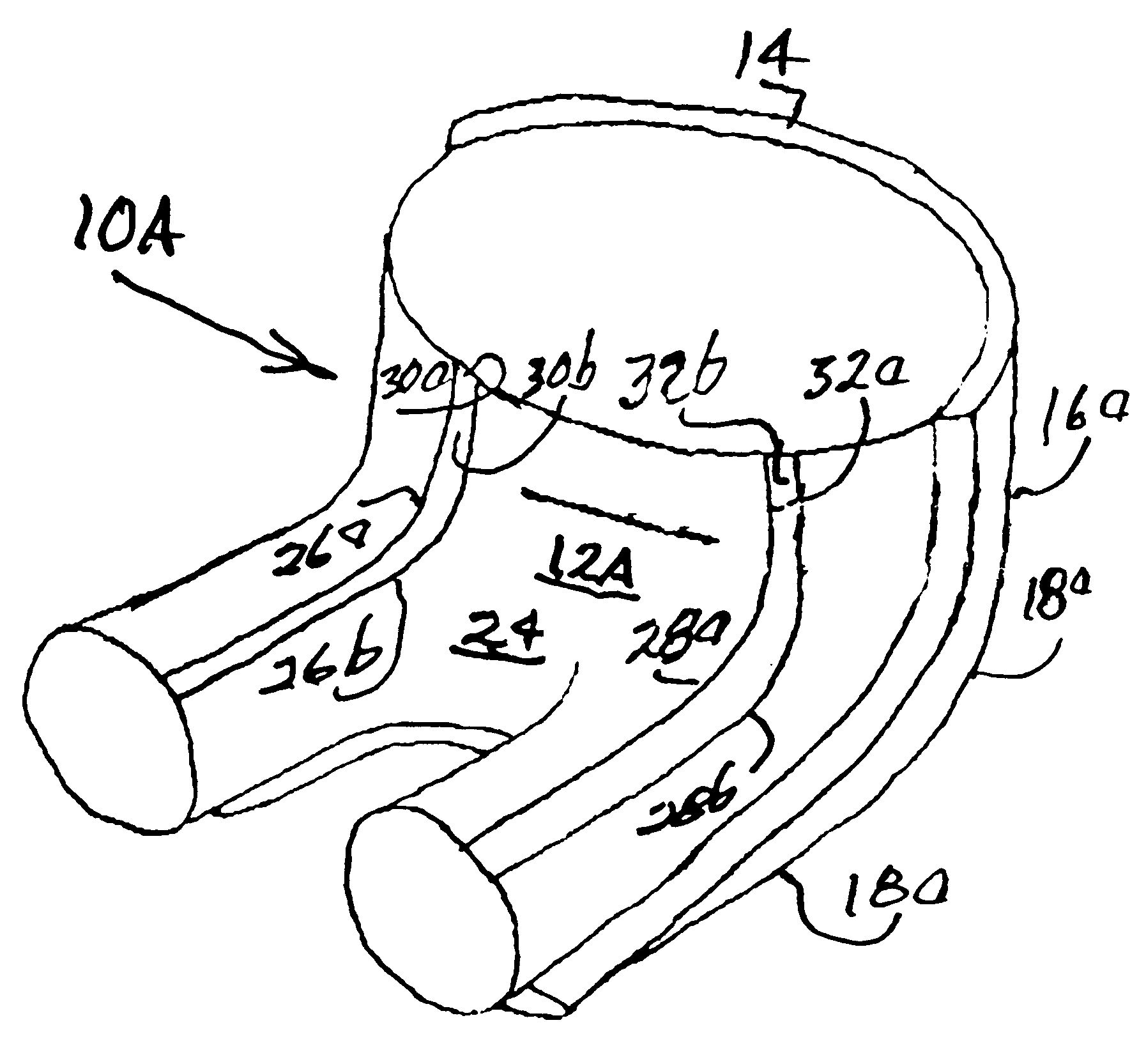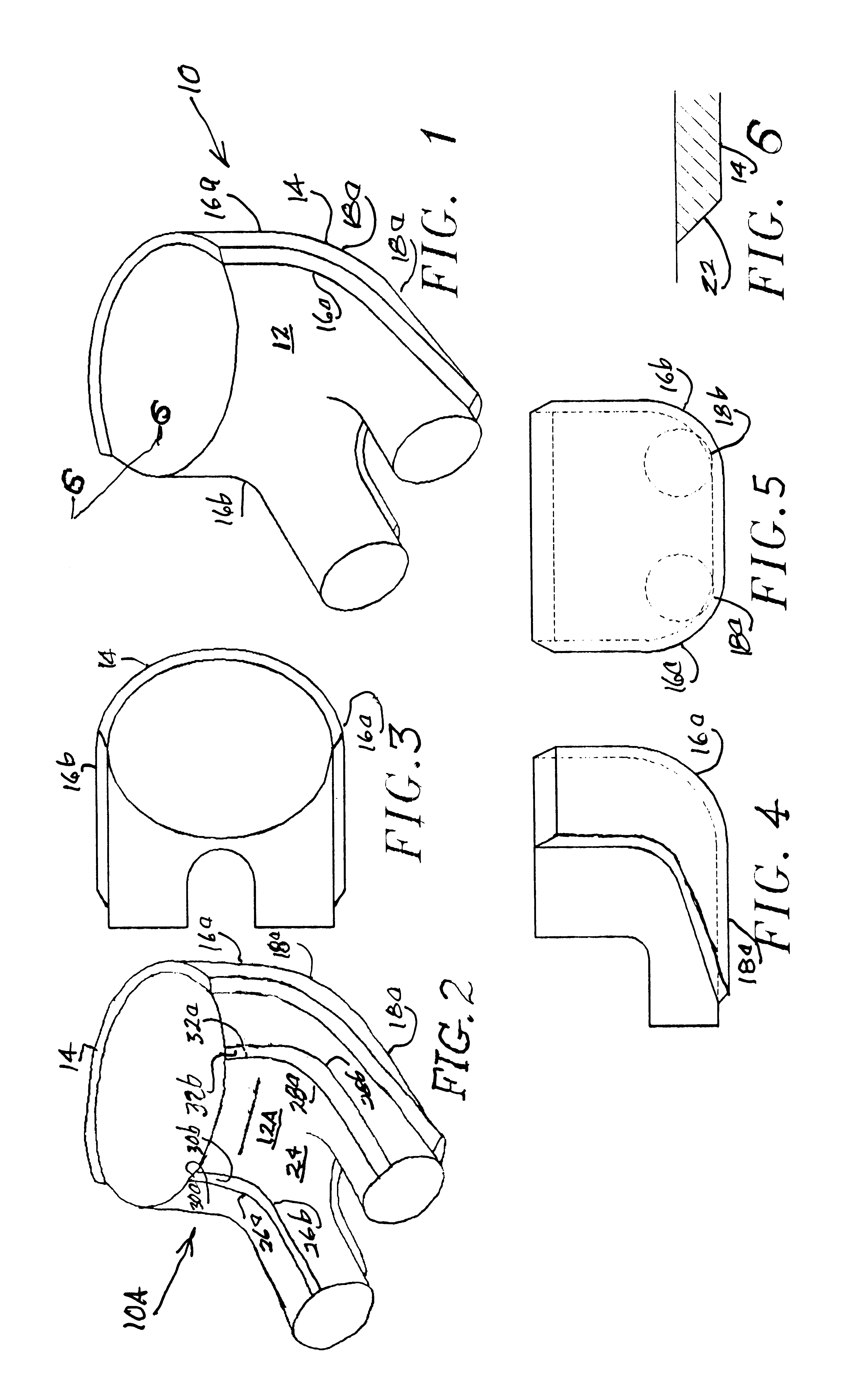Padded garment to prevent pressure sores and other injuries to hips and buttocks of immobilized persons
a technology of padded garments and hips, applied in the field of padding, can solve the problems of decreased blood supply to these tissues, "bed sores", and pressure sores for people who are confined to wheelchairs or beds for prolonged periods
- Summary
- Abstract
- Description
- Claims
- Application Information
AI Technical Summary
Benefits of technology
Problems solved by technology
Method used
Image
Examples
Embodiment Construction
Present invention 10 is comprised of garment 12 having shaped pad 14 located substantially on the posterior thereof, as disclosed in FIGS. 3-5. Pad 14 can be shaped to any of several postures, as desired, without departing from the spirit or intent of the invention. It extends laterally, partially circumferentially, substantially around the hips 16a, 16b and buttocks 18a, 18b of the wearer, providing protection thereto. This is important where the ilium, ischium, and coccyx bones are prominent under the flesh. Pad 14 also extends along posterior surface 20a, 20b of the legs, narrowing in width--circumferentially--to approximately mid-thigh, as disclosed.
Pad 14 has bevel 22 at the edges thereof, making it easier to don clothing over the garment and padding, so that it does not form a ridge which could cause irritation to sensitive tissues.
Pad 14 is formed of a resilient flexible material, such as foamed neoprene rubber or the like, with fabric bonded to both surfaces thereof. Such ma...
PUM
 Login to View More
Login to View More Abstract
Description
Claims
Application Information
 Login to View More
Login to View More - R&D
- Intellectual Property
- Life Sciences
- Materials
- Tech Scout
- Unparalleled Data Quality
- Higher Quality Content
- 60% Fewer Hallucinations
Browse by: Latest US Patents, China's latest patents, Technical Efficacy Thesaurus, Application Domain, Technology Topic, Popular Technical Reports.
© 2025 PatSnap. All rights reserved.Legal|Privacy policy|Modern Slavery Act Transparency Statement|Sitemap|About US| Contact US: help@patsnap.com


